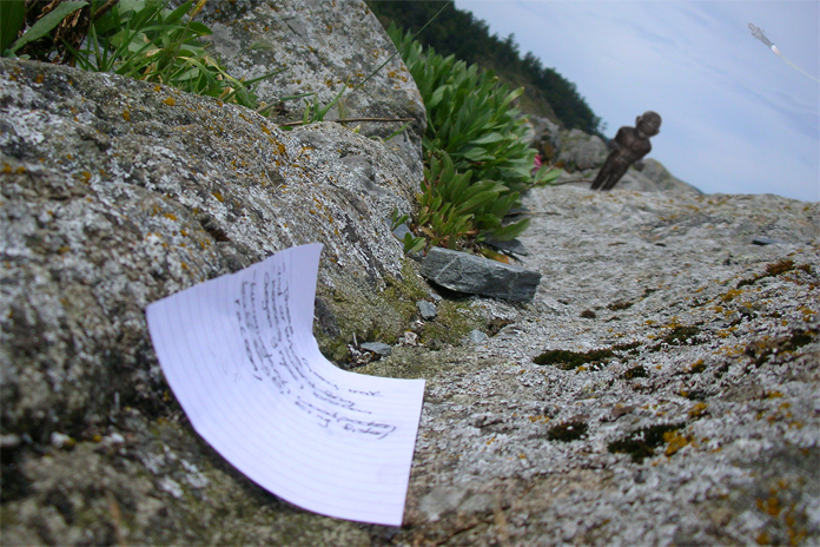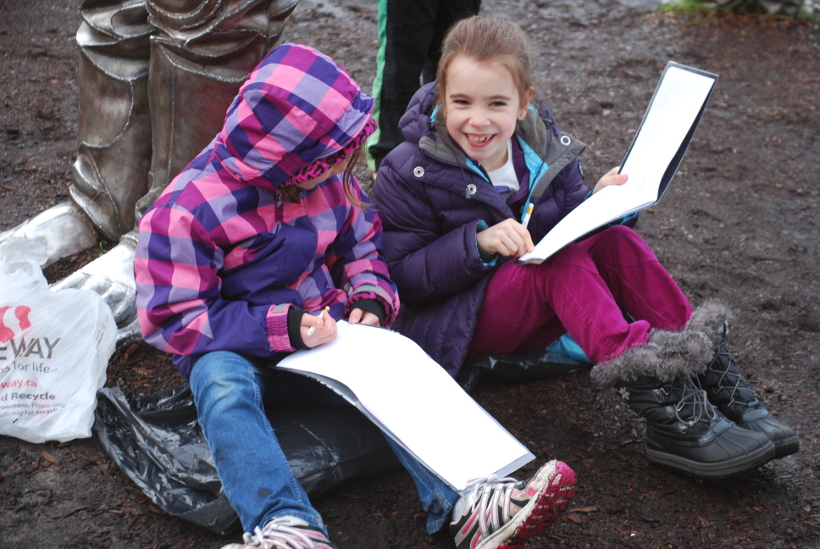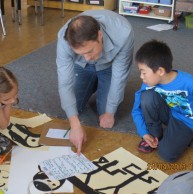Empathy through Communication
Language Arts - Grade 10
Enduring Understanding
We can cultivate empathy throughout our lives
Guiding Questions
How do we show empathy? Why is empathy important? How do we nurture its growth throughout our lives?
Mind Opening
Choose or devise practices to encourage students to be open to new experiences and ways of thinking in your classroom. For example, the MindUP in-school program.
Discovery and Inspiration:
Launch the Project
• Introduce the Theme: Present the Enduring Understanding and Guiding Questions using vocabulary that is appropriate for your grade level.
• About Vancouver Biennale: Play a short video.
• Create Project Space: Brainstorm ideas to make the project theme visual and visible using bulletin boards, a project corner for sharing relevant materials and the process.
Reference Resources:
• Introduction to Sculpture and Public Art Unit Plan for information on how art has evolved over time and the unique experience sculptures and/or public art brings
• Vancouver Biennale 2014-2016 Exhibition Theme: Open Borders / Crossroads Vancouver
• The Meeting (Wang Shugang, China)
• About Artist and Artwork (PDF)
Learning to Learn:
Art Inquiry
Make a visit to The Meeting and encourage students to freely explore and interact with the art pieces individually and in groups. This Art Inquiry process enables the students to practice observing, describing, interpreting, and sharing visual information and personal experiences. Use the Art Inquiry Worksheet (PDF) to guide and capture their ideas and impressions. Customize or create your own Art Inquiry Worksheet as appropriate for your project and class needs.
While at the sculpture, ask students to reflect on the following questions: How are the artists using visual clues to elicit empathy? What in the shapes, colours, positioning, expressions speaks to communication that crosses boundaries? What questions about connection and empathy do the figures evoke? Ask students to note and observe the facial expression, shape, colour, and positioning of the crouching figures.
Shared Insights
• Sharing Art Inquiry Experience: Ask students to share the Art Inquiry Worksheet responses in class.
• Artist Themes – Research: In small groups students rotate between information stations detailing the artist’s life and work. Station topics include: (1) education and training; (2) lifetime of artwork; (2) materials and processes; (3) beliefs and values. At each station, students answer questions and complete a task. For example, at the station “life’s work” students might plot the artist’s various installations on a map of the world.
• Artist Themes – Empathy: Ask students to research on past G8 Summit discussions and reflect on why empathy is important is important in the decision making process and the follow up actions.
Inquiry Challenges
Teacher reads students a short story The Scarlet Ibis by James Hurst or A Short History of Indians in Canada by Thomas King. Students write a reflection on how the story made them feel.
Have students watch the documentary A Class Divided (1985) and discuss the empathy shown by the children and the process of their understanding of prejudice and empathy.
In the novel study To Kill a Mockingbird by Harper Lee students may create various written works such as letters, journal entries, poetry, and opinion pieces about prejudice and empathy as inspired from the novel.
Students can do the ‘step forward’ exercise in which they are given pseudo identities and are asked questions about their rights and freedoms. Students who can answer yes to a questions such as “Do you feel safe walking down the street at night” can take a step forward, whereas those who answer no stay in one place. The activity shows us visually how privileged we are.
In groups, students can write the questions for an interview of a historical figure who was oppressed. For example, if you could ask Anne Frank anything in an interview, what would you ask her? Other historical figures might include an Egyptian slave, a child soldier in Sierra Leone, or a citizen of North Korea. Facilitate further inquiry on what position did the government from other countries take in these situations of oppression and why. Ask the students in their opinion, what can be done if similar situations recur to show empathy or compassion across borders?
Student Creations and Taking Action
In groups, students make zines (personal magazines) of their work. Zines can include poetry, letters, journal entries, visual art, scientific information, and more. When finished, the zines can be presented to and distributed throughout the community.
Students should continue to keep empathy in mind when meeting new people and having new experiences. Students can continue developing empathy through online activities such as The Empathy Map.
Reflection
Teacher and students can reflect on their entire learning process by revisiting the Enduring Understanding and relevant Guiding Questions.
Teachers and students can reflect on their entire learning process. How did the unit of study open inquiry? Create cross-curricular learning opportunity? Apply learning to a real life situation? How has the inquiry changed your opinions, values and understanding? In what way, if any, have you grown as a learner?
Ideas for Cross-Curricular Access
• Arts Education (Visual Arts): Have students work on an abstract art piece that embodies an emotion. They can do this by creating thumbnails of six different emotions and then choosing one to make into their abstract painting that embodies that emotion.
• Science: Have students watch clips of documentaries about chemicals in the brain such as The Nature of Things with David Suzuki: Surviving ‘:) The Teenage Brain (2012). Next, students can do their own research on how different emotions occur chemically in the brain.
• Social Studies – Identity, Society and Culture: Students research a historical event that involved oppression such as the interaction between First Nations and European settlers, immigration and immigrants in Canada, etc. After researching, students write a journal from the perspective of a fictional person who lived through the event.
Credits
Written by: Katie Dwernychuk, 2013 UBC Secondary School Teacher Candidate
Edited by: Jennifer Massoud, Secondary School Teacher
©2013 Vancouver Biennale


